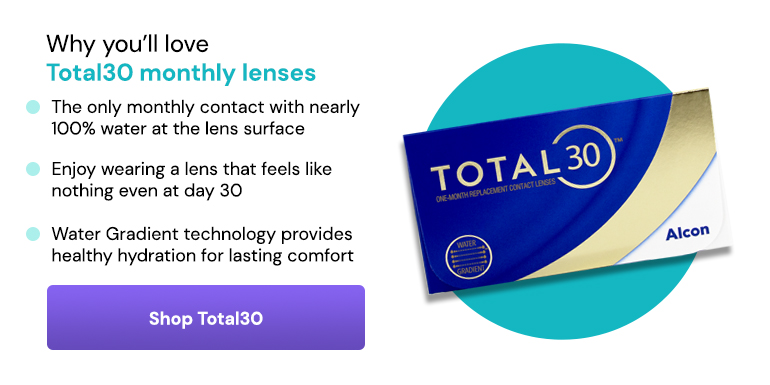Myopia – Causes, symptoms and treatment
Photo by John Matychuk on Unsplash
What is myopia?
Myopia is a refractive error also known as short-sightedness or near-sightedness and it means that objects in the distance appear blurred, while close vision is clear and sharp. It is one of the most common eye conditions, becoming increasingly more common over recent years as a third of the UK population is now said to be short-sighted.
Myopia is usually caused when the eye has grown longer than average (23mm). Due to this increase in length, incoming light falls short and doesn’t reach the correct places on the retina, causing objects in the distance to appear blurred.
You may have no issues performing close-up tasks like reading a book, but you’ll likely struggle when it comes to viewing things that aren’t within reach.
If your prescription shows that you have a minus-powered sphere (usually the first number on your prescription) it means you’re short-sighted. The higher the number, the more severe your myopia is.
Types
There are two main types of myopia, which differentiate by the intensity of the refractive error.
Simple myopia
Simple myopia is the regular form of myopia, with healthy eyes and dioptres of up to –6. This can easily be corrected with glasses or contact lenses.
High myopia
High myopia is intense short-sightedness, with dioptres above –6. Those with high myopia might prefer contact lenses over corrective glasses, as glasses are often thicker to correct the refractive error and therefore heavier.
Who is at risk?
Myopia can be developed at any age, but it usually occurs during childhood and adolescence. Diabetics may also develop myopia later in life, as it can be a sign of changes in blood sugar levels.
Children and adolescents
Short-sightedness typically starts at a young age, during the early school years. As our bodies are still growing until we reach our twenties, so do our eyes and most of the developments and possible irregularities thereof happen at an earlier age. Therefore, myopia increases steadily over the first years, and the increase of dioptres reduces as our bodies stop growing.
Why is it so common?
While it’s not known what causes the eye to grow too long, researchers have been looking into why myopia is on the rise. They’ve found that factors such as genetics, our body clock, and the environment might all play a part.
Donald Mutti from the Ohio State University College of Optometry in Columbus conducted a study into the ‘myopia boom’. He observed more than 500 eight and nine-year old’s who started with healthy vision. After five years, Donald and his colleagues found that one in five children who developed myopia had spent less time outdoors than those who did not. This was backed up by a further study of over 4,000 schoolchildren in Sydney, Australia.
In today’s world, we spend a lot of time reading eBooks, working in front of computer screens and networking via smartphones. Using electronic devices close to our eyes is believed to contribute to the development of myopia, so it’s advised that you spend some time away from reading, writing or looking at your screen often.

Photo by Nik Shuliahin on Unsplash
Is the progression of myopia preventable?
If a family history of short-sightedness already exists, the development of myopia is not preventable. However, protecting your eye health might reduce the progression of myopia. This is important as the progression to high myopia can increase the risks of early glaucoma or cataracts.
Maintain your eye health
Regular eye tests ensure that your eyes are healthy and help detect any irregularities, they are recommended to be attended to every two years. The results confirm whether your prescription glasses or contact lenses are still the correct fit for you, as wearing the glasses or contacts with the wrong prescription over extended periods may impact your eyesight. During these eye tests, it is important to mention any existing health conditions or chronic illnesses to your optometrists, so they know to look out for specific signs that could affect your eye health.
A healthy diet filled with leafy greens, fruit and vegetables, as well as fatty omega-3 supplements, can also help to support healthy eyes. Smoking should be avoided, as this negatively affects your body in multiple ways, including your eye health.

Causes
The refractive error myopia is caused either when the eyeball is elongated, rather than a round shape, or if the cornea (the clear part at the front of the eyes), is too curved. This means the light rays entering the eye are not centred correctly on the retina, but in front of the retina, causing objects in the distance to appear blurry.
The exact causes for this are unknown, the environmental factor can disrupt the development of the eyes, but most commonly it appears to be inherited.
Genetics
Children whose parents are both myopic are more likely to develop myopia themselves. Research has shown that over 40 genes are linked to short-sightedness, as they are responsible for eye structure and development. These genes work as a signal between the brain and the eyes and if affected are said to cause inherited myopia.
Symptoms
The first symptom of short-sightedness is the decreasing ability to see in the distance. This can become apparent at school while trying to read the whiteboard, at home while watching TV, or during driving when signs are difficult to read, especially at night.
An eye test often confirms the need for corrective glasses or contact lenses.
How to tell if your child is short-sighted
Children might not always tell their parents if they have issues with their sight, so looking out for certain signs can help your child’s eye health.
If your child is short-sighted, they might squint to see things better, sit closer to the TV or rub their eyes frequently. If their vision is only affected in one eye, they may complain about headaches or cover one eye to see better.
General clumsiness or unawareness of surroundings can also be signed as short-sightedness.

Photo by Kelly Sikkema on Unsplash
Diagnosis
An eye test with your optometrist will reveal whether you are short-sighted, and to what extent.
Routine eye exams should be scheduled every two years for those with healthy eyes, however, sight tests can be scheduled at any point, if you or your child are noticing any vision changes or previously mentioned symptoms.
During the eye exam
The optometrist is trained to examine your eyes and will carry out several tests during the eye exam.
They test your visual acuity, which is the part where you read from a chart of letters or numbers and perform refraction (a method of determining the prescription). Additionally, they assess the health of the eyes, which is an important part of the exam.
What are the treatment options?
Glasses or contact lenses are the most common forms of treatment for short-sightedness. However, laser eye surgery has gained popularity over the past years, being the only treatment option that can correct myopia permanently.
Glasses
Corrective glasses use lenses that are made specifically to match your prescription. The thickness of the glass lenses depends on the dioptres on your prescription. Glasses with a low corrective number are thinner and therefore lighter in weight than those with higher prescriptions.
Glasses are a popular choice for the correction of myopia for those with low myopia who only wear them while driving or watching a film in the evening.
Contact lenses
Contact lenses can be used to correct myopia in the same way as glasses. They require a different prescription for glasses, as they sit directly on the eyes to offer vision correction for the full field of view.
Surgery
There are three types of laser eye surgery: LASIK, LASEK and PRK. Each uses a small laser to manipulate the curvature of the cornea, so light that enters your eyes is focused on the back of your eye (retina) and objects in the distance no longer appear blurry.
Myopia prescription measurements
Once you have had your eyes tested and find that you are short-sighted, you will receive a prescription from your optometrist.
How to read your prescription
On your prescription, you can always find the following three numbers:
- The sphere indicated the dioptres that describe how short-sighted you are and shows a negative number.
- The cylinder will indicate whether you have astigmatism. If you don’t have astigmatism in either one of your eyes, this will be left empty.
- The axis also indicates astigmatism and shows at what angle or direction it is in. This is also left empty if it does not apply to you.
If you think that you or your child may be short-sighted, book an appointment with your Optician. A simple eye test will be able to diagnose myopia and you’ll be back to enjoying the benefits of clear vision in no time!



